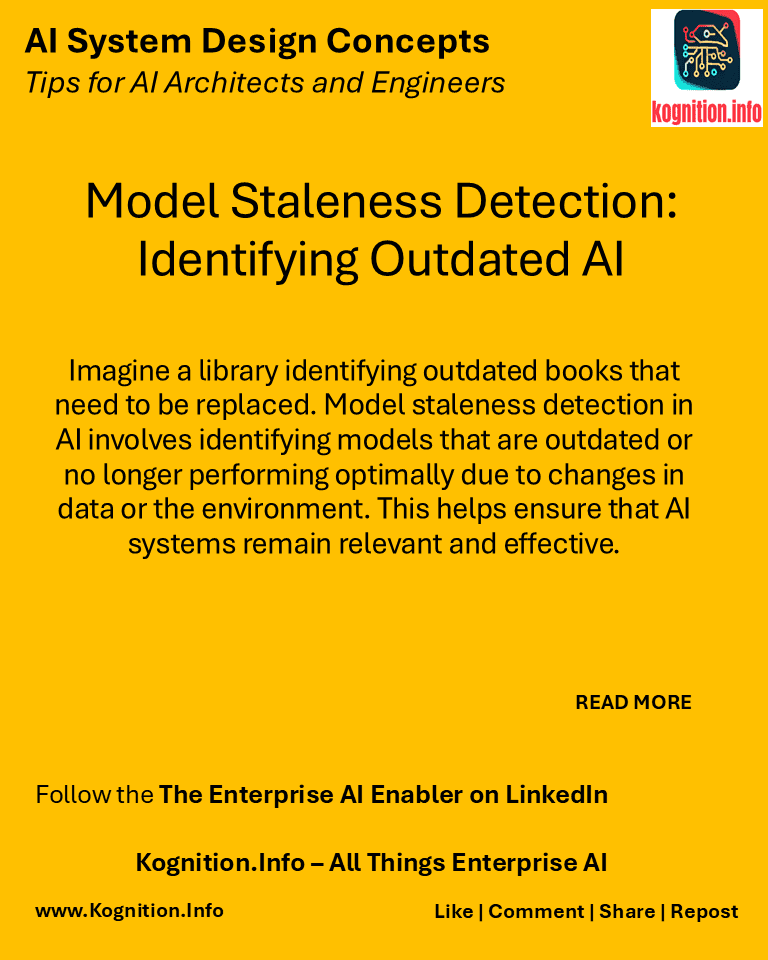
Imagine a library identifying outdated books that need to be replaced. Model staleness detection in AI involves identifying models that are outdated or no longer performing optimally due to changes in data or the environment. This helps ensure that AI systems remain relevant and effective.
Use cases:
- Detecting concept drift: Identifying when the relationship between input features and target variables changes over time.
- Monitoring data relevance: Determining if the training data used for a model is still representative of the current data distribution.
- Identifying performance degradation: Detecting when a model’s performance starts to decline due to staleness.
How?
- Monitor performance metrics: Track key performance indicators like accuracy, precision, and recall over time.
- Analyze data distributions: Compare the distribution of current data with the training data used for the model.
- Utilize staleness detection techniques: Employ statistical tests or machine learning algorithms to detect significant changes in data or model behavior.
- Trigger retraining or updates: Retrain models or update model parameters when staleness is detected.
Benefits:
- Sustained model accuracy: Ensures that models remain accurate and relevant as data changes.
- Improved decision-making: Prevents outdated models from making incorrect or biased predictions.
- Reduced risk: Minimizes the risk of using stale models that may lead to negative consequences.
Potential pitfalls:
- False positives: Normal fluctuations in data or performance can trigger false alarms.
- Delayed detection: Detecting staleness too late can lead to significant performance degradation.
- Complexity: Implementing staleness detection can require specialized knowledge and tools.
